US Foreign Policy
The Defense Department and the Military
Michael E. Flynn
Kansas State University
Updated: 2021-10-11
Lecture Overview
Historical background
Organization of the DOD
Organization of the Military
Military leadership and politics
Key Questions
How has the organization of the US military changed over time?
What is the general structure of the US military—What are the key organizational entities and how do they relate to one another?
How have the economic interests of political parties affected their relationships with the branches of the military?
In what ways is the military a political institution?
Historical Background
Historical Background
The military of olden times looked a lot different than it does today
The Military was initially two separate, independent entities
Department of the Army
Department of the Navy
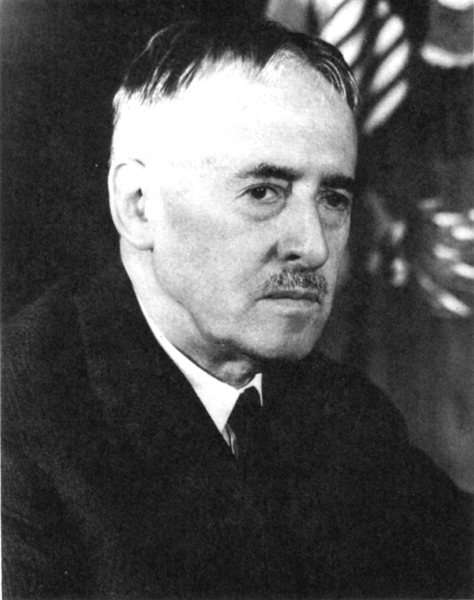

Notes
- Henry Stimson and Frank Knox. Secretaries of War and Navy (respectively) during WWII. Oversaw the US war effort, and both reported directly to President Roosevelt. Both Republicans.
- Independent services led to coordination problems.
- Stimson and others also criticize FDR’s administrative abilities. Bad at giving direction and keeping subordinates organized.
- President Truman stated: “We must never fight another war the way we fought the last two. I have the feeling that if the Army and the Navy had fought our enemies as hard as they fought each other, the war would have ended much earlier.”
- Henry Stimson: The JCS was “an imperfect instrument of top-level decision,” because “it remained incapable of enforcing a decision against the will of any one of its members.” (See JCS History)
- George Marshall: “the lack of real unity has handicapped the successful conduct of the war.”
- This prompts discussion of a major reorganizational drive for the US military
Historical Background
National Security Act of 1947
Creates the National Military Establishment (NME)
Department of Defense (DoD) follows in 1949
Army Air Corps becomes independent Air Force
Army, Navy, Air Force, and Marine Corps brought under one unified organization with one civilian secretary
National Security Act of 1947:
- Intended to solve coordination problems that plagued the Army and Navy during WWII. Also intended to sort out the growing power of the Army Air Corps.
- Army Leaders wanted the Army Air Corps out of the Army. Argued that it would corrupt the Army’s traditional mission of providing overwhelming ground combat capabilities.
- Secretary of the Navy James Forrestal (1944–1947), opposed unification. He believed (as did many others) that the Navy would be relegated to a transportation role, and that the Marine Corps would be stripped and integrated into the Army. The air force now had nuclear weapons, but the Army and Navy did not.
- Subsequent amendments to initial legislation protected Navy’s air wing, and the Marine Corps.
Historical Background
James Forrestal
First Secretary of Defense
Former Secretary of the Navy
Resigned March 28, 1949
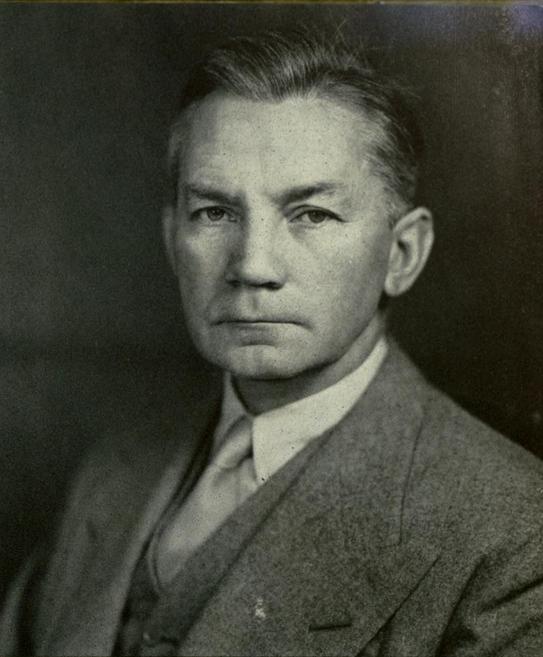
James Forrestal
- First Secretary of Defense. Formerly serving as Secretary of the Navy.
- Position was initially weak. Forrestal could do little to override the chiefs of staff and the individual military departments, who still retained significant power. His tenure was plagued by difficulties. He also opposed Truman’s approach to defense spending, which did not prioritize national threats. Truman initially wanted to cut spending, capping the FY1949 budget at $10 billion ($127.7 billion in 1997 dollars) but service chiefs went around Forrestal and got Congress to approve a larger budget than what Truman wanted.
- Truman wanted a budget cap of $14.4 billion for FY1950, Forrestal and the JCS prepared several budget plans ranging from $14.4 billion o $18 billion.
Defense Department Organization
Defense Department Organization
Main components
Office of the Secretary of Defense (OSD)
Military Departments
Joint Chiefs of Staff
Combatant Commands
Main components
- Office of the Secretary of Defense (OSD): This is the main civilian branch of the military. There are military officers working within the OSD, though.
- Military Departments: Army, Navy, Air Force
- Joint Chiefs of Staff
- Combatant Commands
Defense Department Organization
But wait, what are these things?
| Office of the Secretary of Defense | Military Departments | Joint Chiefs of Staff | Combatant Commands |
|---|---|---|---|
| Civilian side of the military | The military side (which also contains a civilian side) | Upper level management of military leadership | Focus on warfighting/planning |
| Secretary of Defense, Deputy, Assistant, and Under Secretaries | Army, Navy, Airforce, Space Force | Chair of the Joint Chiefs of Staff, Vice Chair, and other service chiefs | Made up of personnel from different service branches |
| Civilian offices and bureaues | Less about warfighting, more about recruitment, doctrine, and management | Principal military adviser to the president (CJCOS) | Focus on specific geographic or functional AOR |
Details on functions and roles
- But what do these entities do?
- Lots of stuff, review slide content.
Defense Department Organization
Goldwater-Nichols Act
Greatest reorganization of the US military since National Security Act of 1947
Removed Joint Chiefs of Staff from the operational chain of command
Creates Vice Chair of the Joint Chiefs of Staff
Chain of command runs straight to combatant commanders:

Goldwater–Nichols Act of 1986
- Major reorganization of US military
- Removes JCS from the operational chain of command. Chain of command runs directly from the president to the SECDEF to the combatant commanders.
- Intended to promote a more holistic approach to defense. Since the CINCs command forces from every branch, it was believed they would be less parochial than service chiefs.
- Coordination problems still exist:
- (Apocryphal?) During Grenada invasion an Army officer had to use his AT&T card and a payphone to call in air support for his troops because Army and Air Force were not operating on the same frequency
- Also each branch buys similar equipment, but it is not necessarily interchangeable. This contributes in some ways to maintaining service independence, as this scheme prevents individual services from being folded into one another too readily. Massive transaction costs associated with combining branches since we would have to decide what equipment to stick with, how and when to train new people on new equipment, etc.
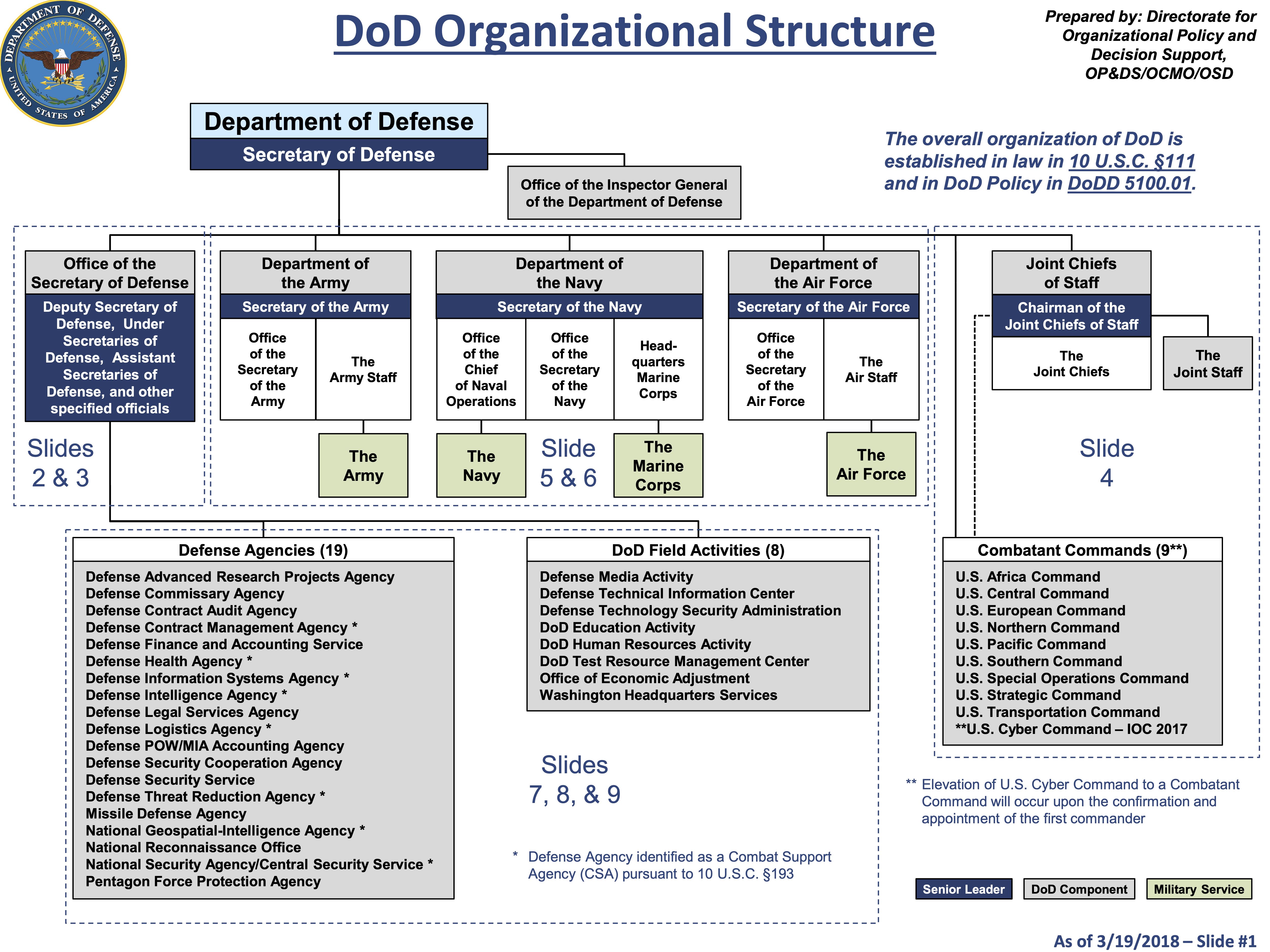
Organization chart
- Discuss basic organizational details
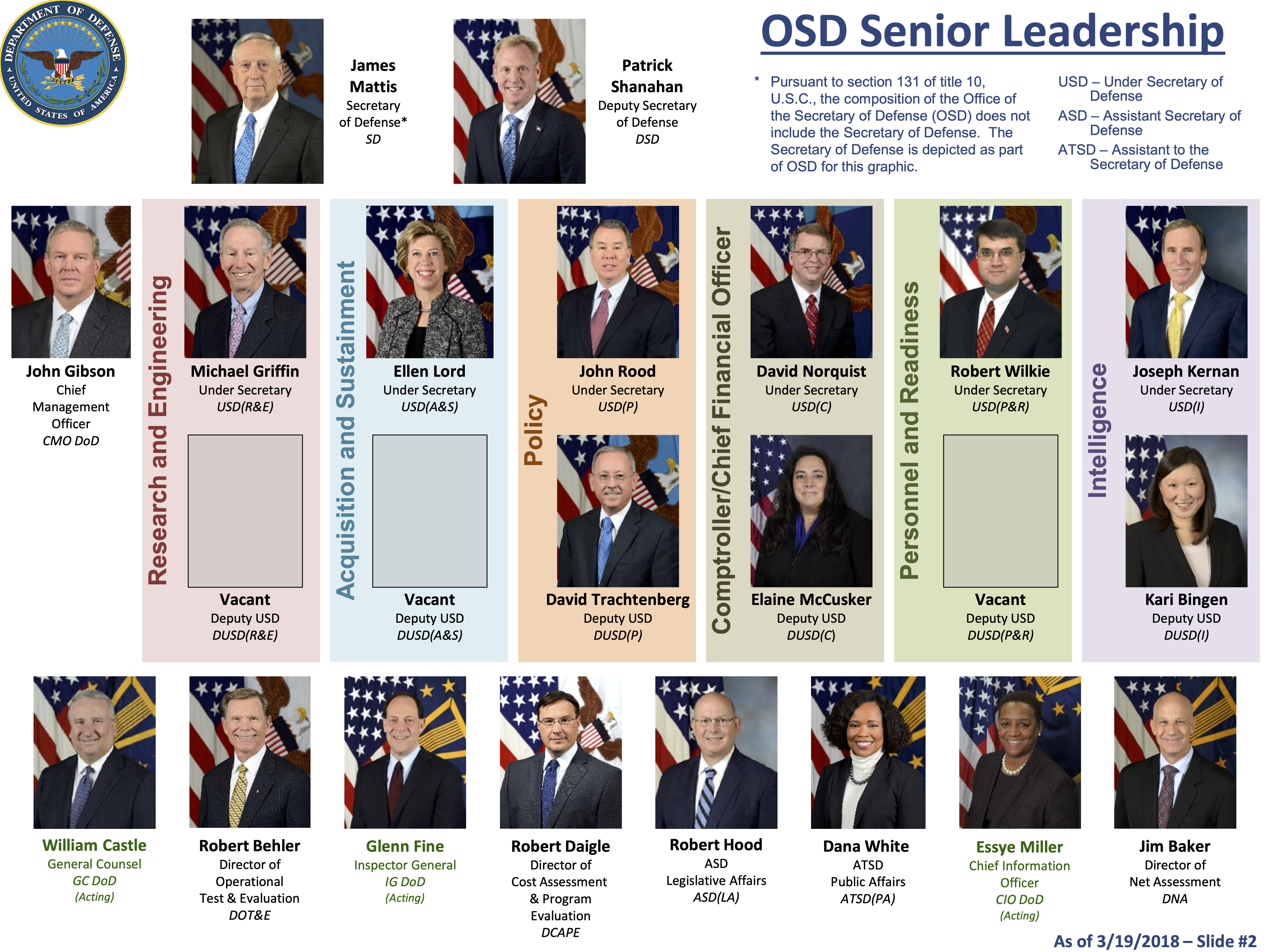
OSD Leadership
- OSD is the civilian side of the DoD.
- Oversees every aspect of the Department of Defense
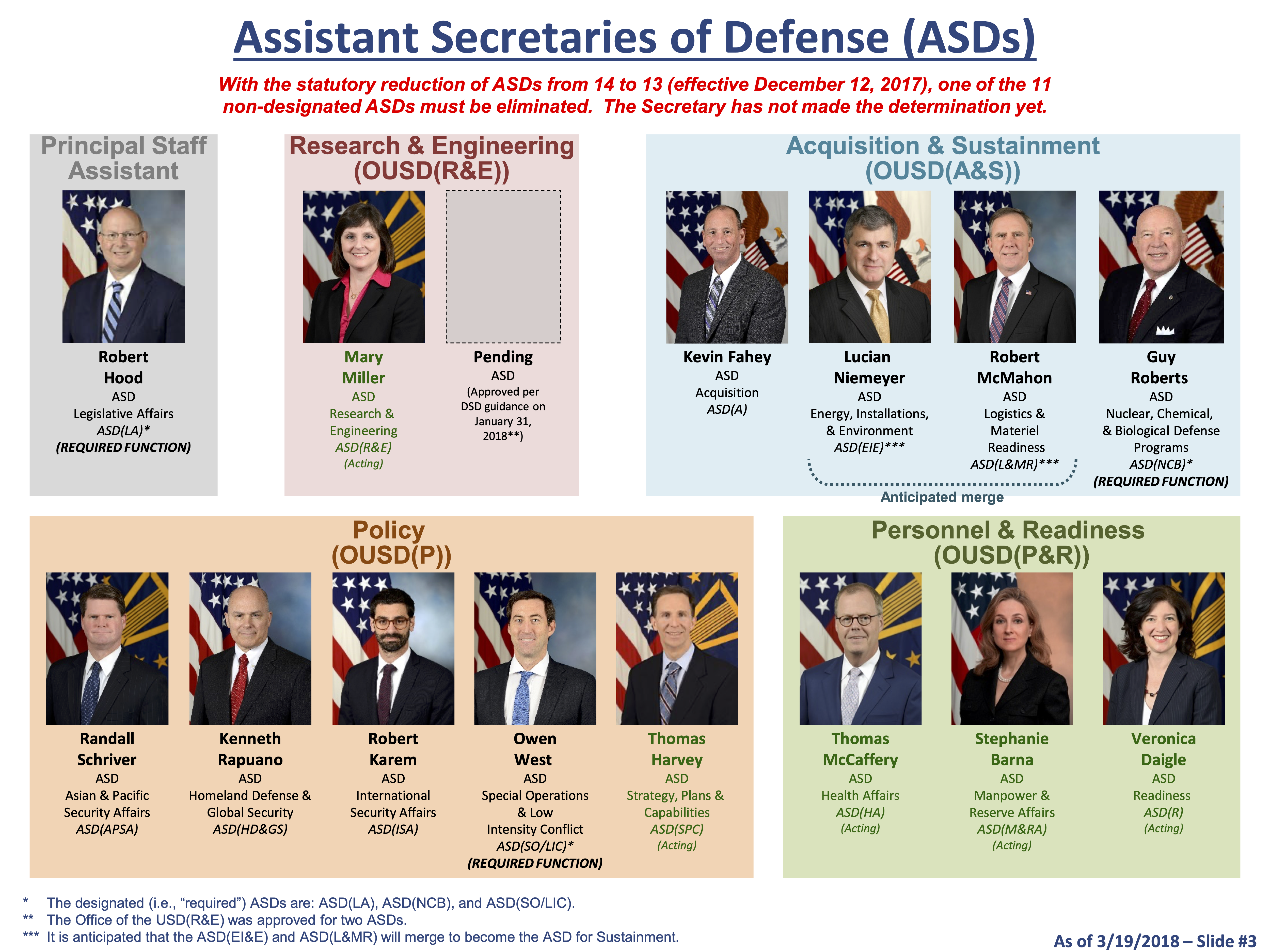
Assistant Secretaries
- Perform/manage more fine-grained tasks and oversee specific functional or topical areas.
- Note that blacks indicate which Under Secretary they fall under
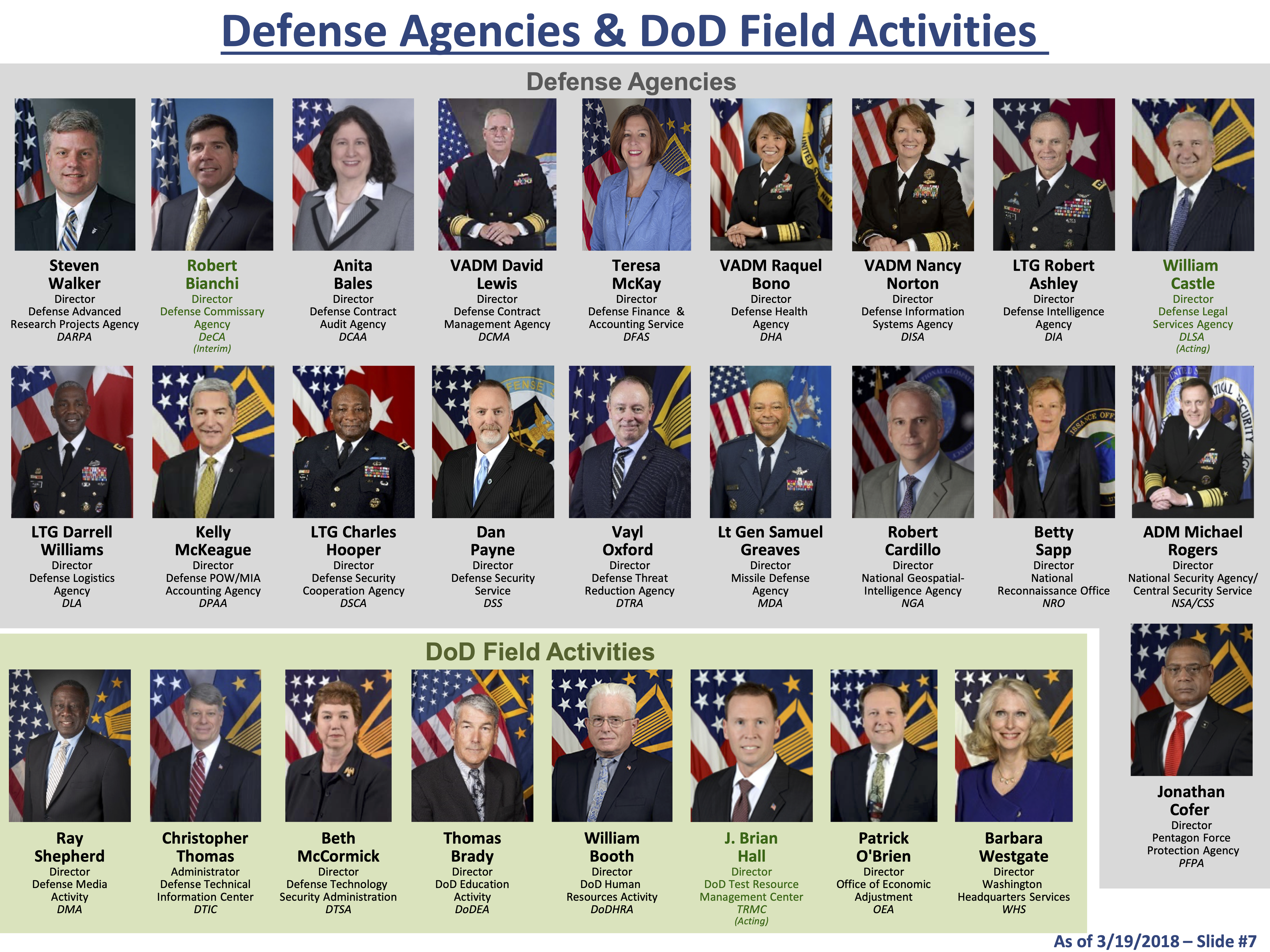
Defense Agencies and Field activities
- Mixture of military and civilian personnel
- Note the National Security Agency (NSA) is hiding over there on the right, as is the National Reconaissance Office (NRO)
- Also note that with the exception of Admiral Rogers at the NSA, all agencies are director or Three-star level.
Defense Department Organization
Secretary of Defense Mark Esper
Former Secretary of the Army
Former VP for government relations at Raytheon
Former Deputy Assistant Secretary of Defense
Former Senate staffer and policy director for House Armed Services Committee
Lt. Col US Army (Retired)
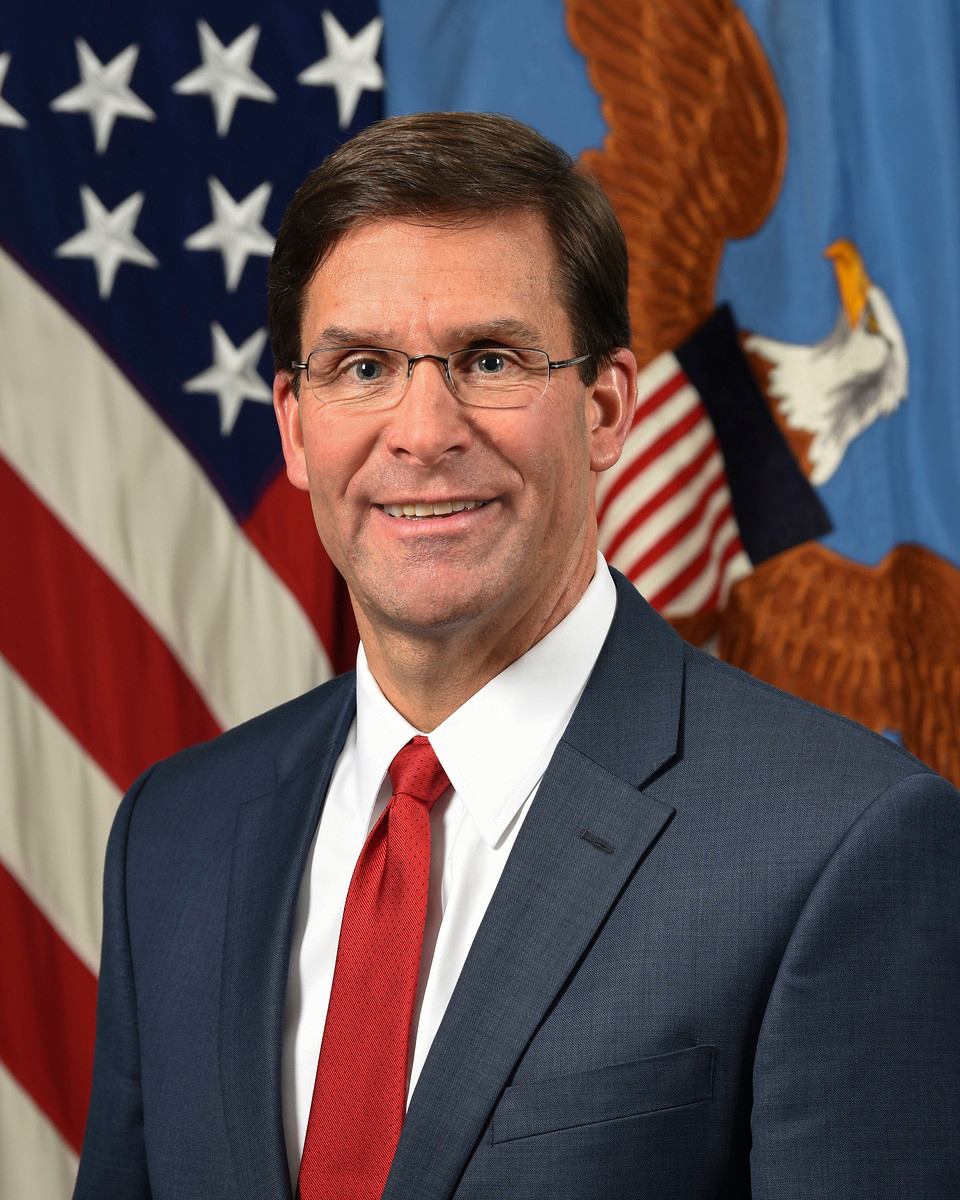
SecDef
- Mark Esper
- Political Appointment subject to Senate Confirmation
- Often has a military background (not always)
- Other SecDefs have had academic backgrounds.
- Ashton Carter was a physicist before entering politics.
- Harold Brown (SecDef under President Carter) got his PhD in nuclear physics at age 21.
Organization of the Military
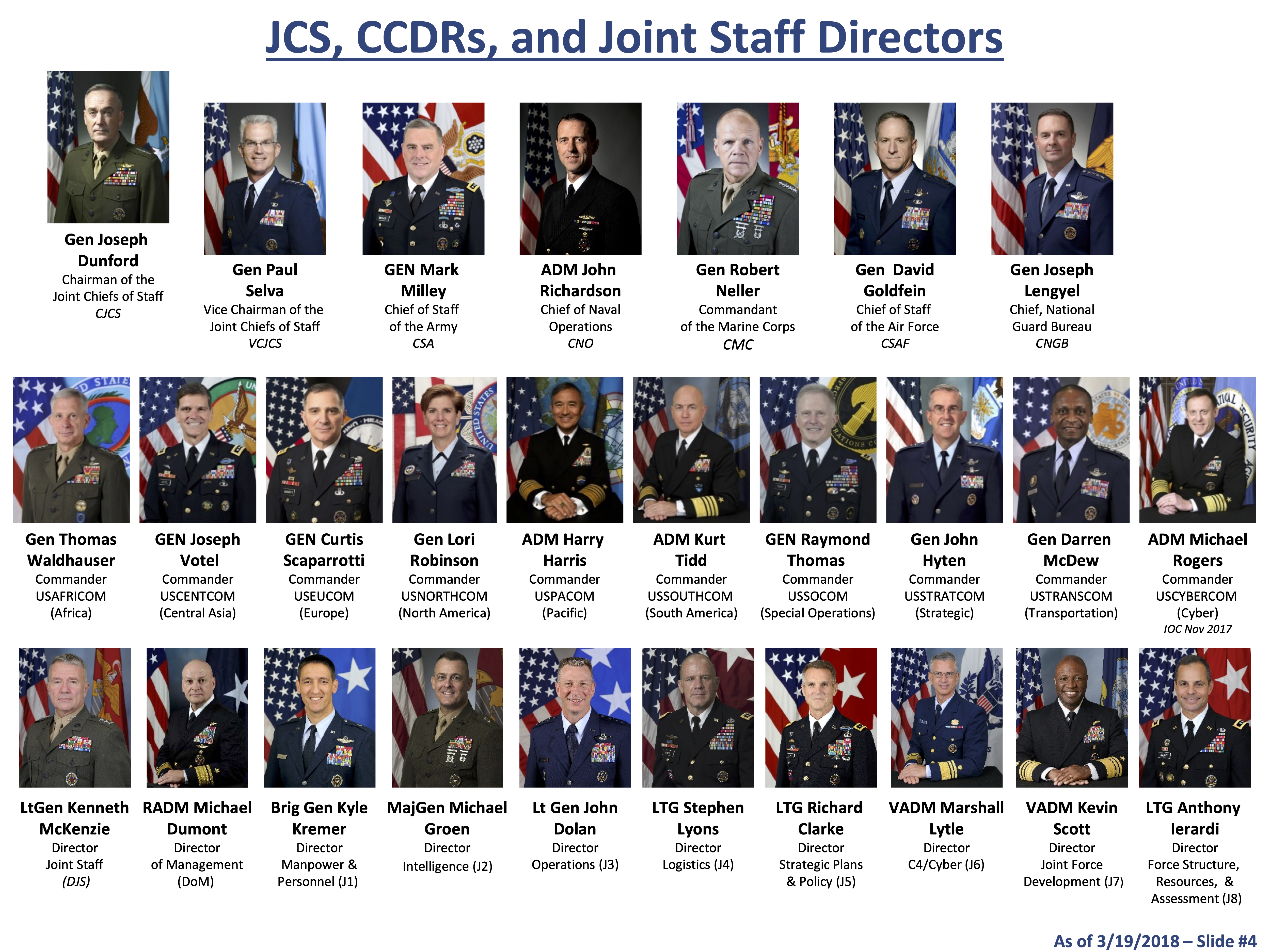
JCOS and Joint Staff
- Not up to date, but a good overview of the organization of central military leadership
- First row is the chair, vice chair, and chiefs of staff.
- Second row is the commanders of regional and functional commands
- Third row are specific offics on joint staff
- Note some of these are key positions on road to higher office/rank.
- Joseph Martin is a general currently serving as vice chief of staff of the Army, previously served at Ft. Riley as 1ID commanding general.
- Former 1ID commanding general John Kolasheski went to serve on the Joint Staff before being promoted to serve as commander of the V Corps.
But 2019 was a big year for the military!
Space Force!
Space Force GIF
- This is the first new service created since 1947. Big deal!
- Established by the 2020 National Defense Authorization Act
- The Act also establishes the Assistant Secretary of Defense for Space Policy, and other positions within the Department of the Air Force

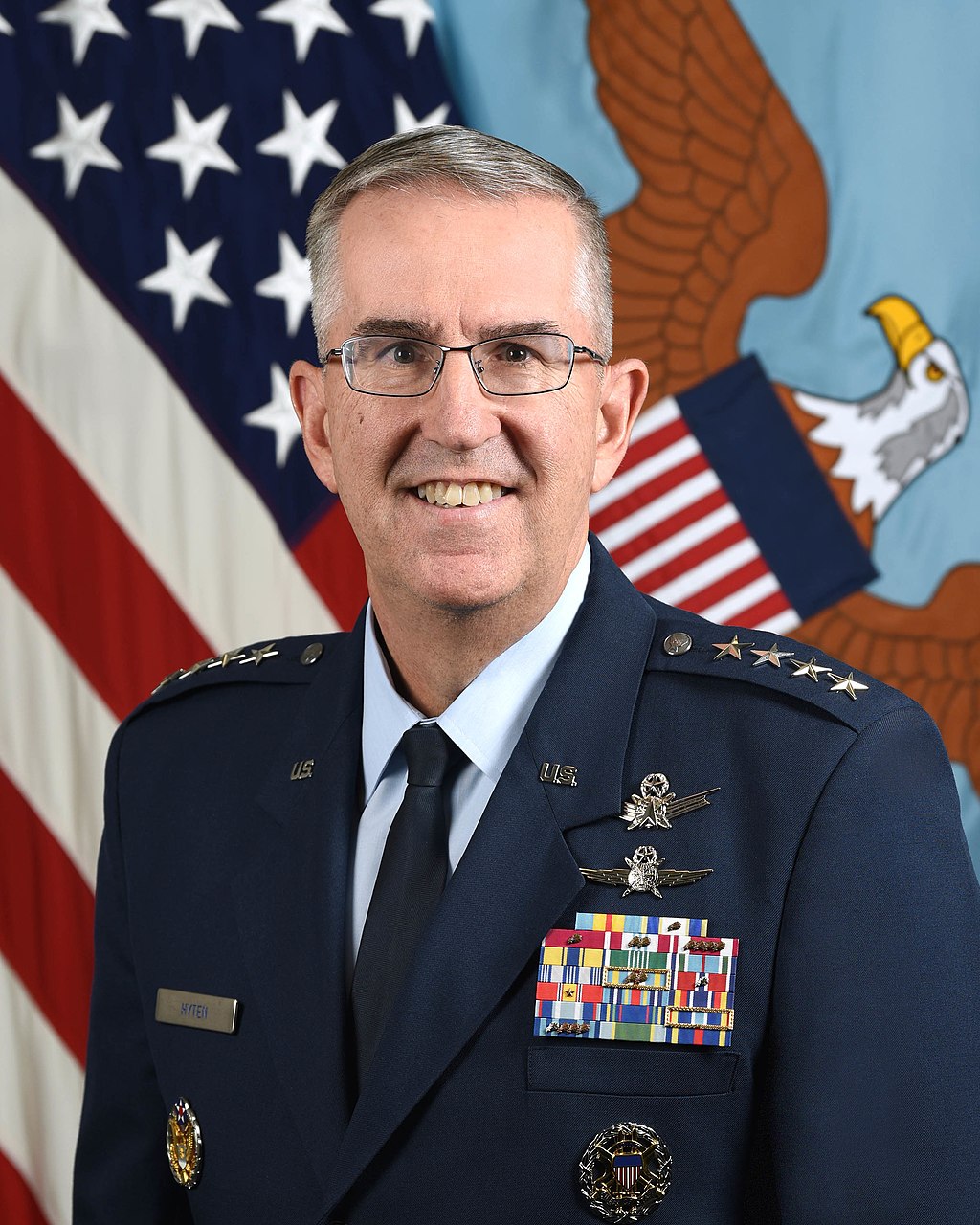
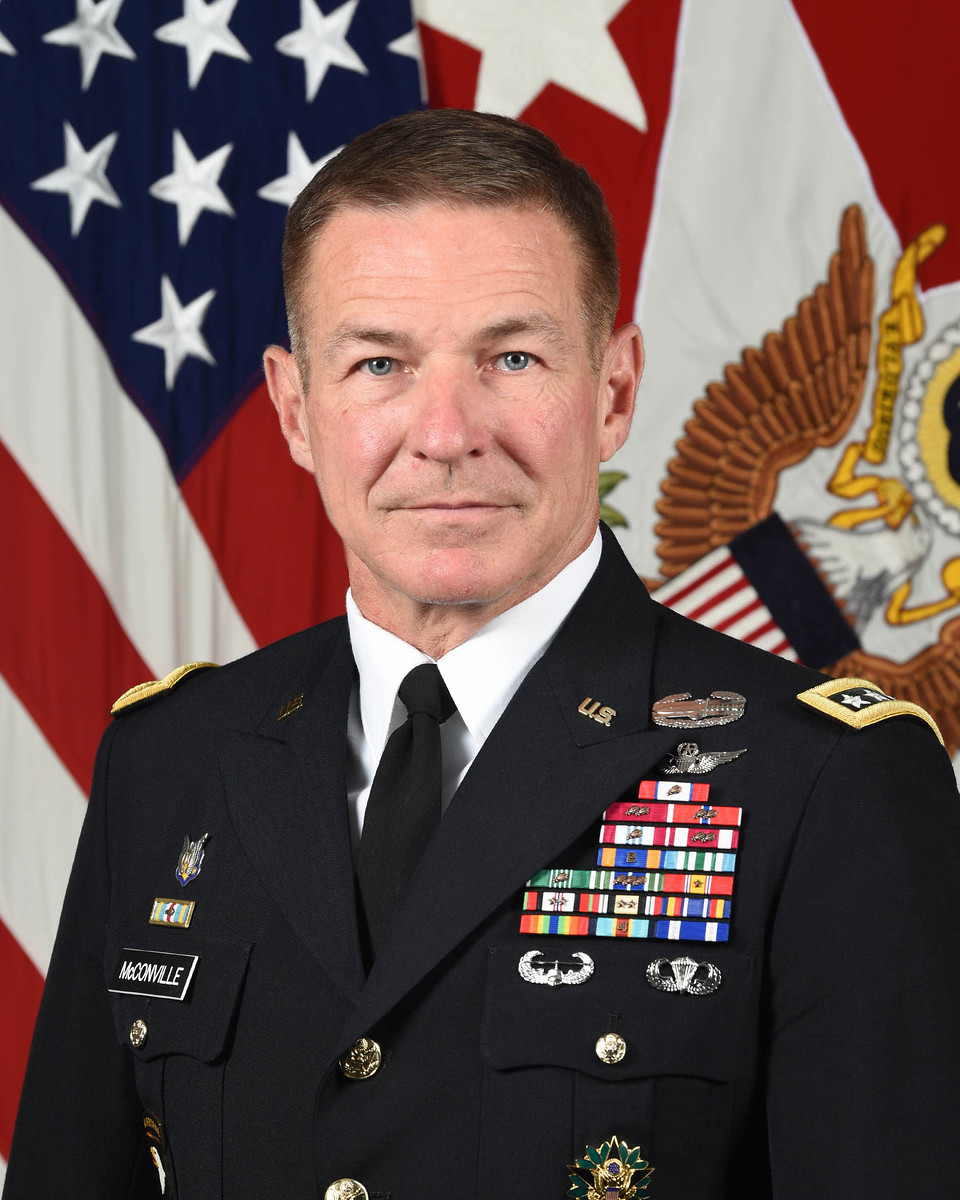
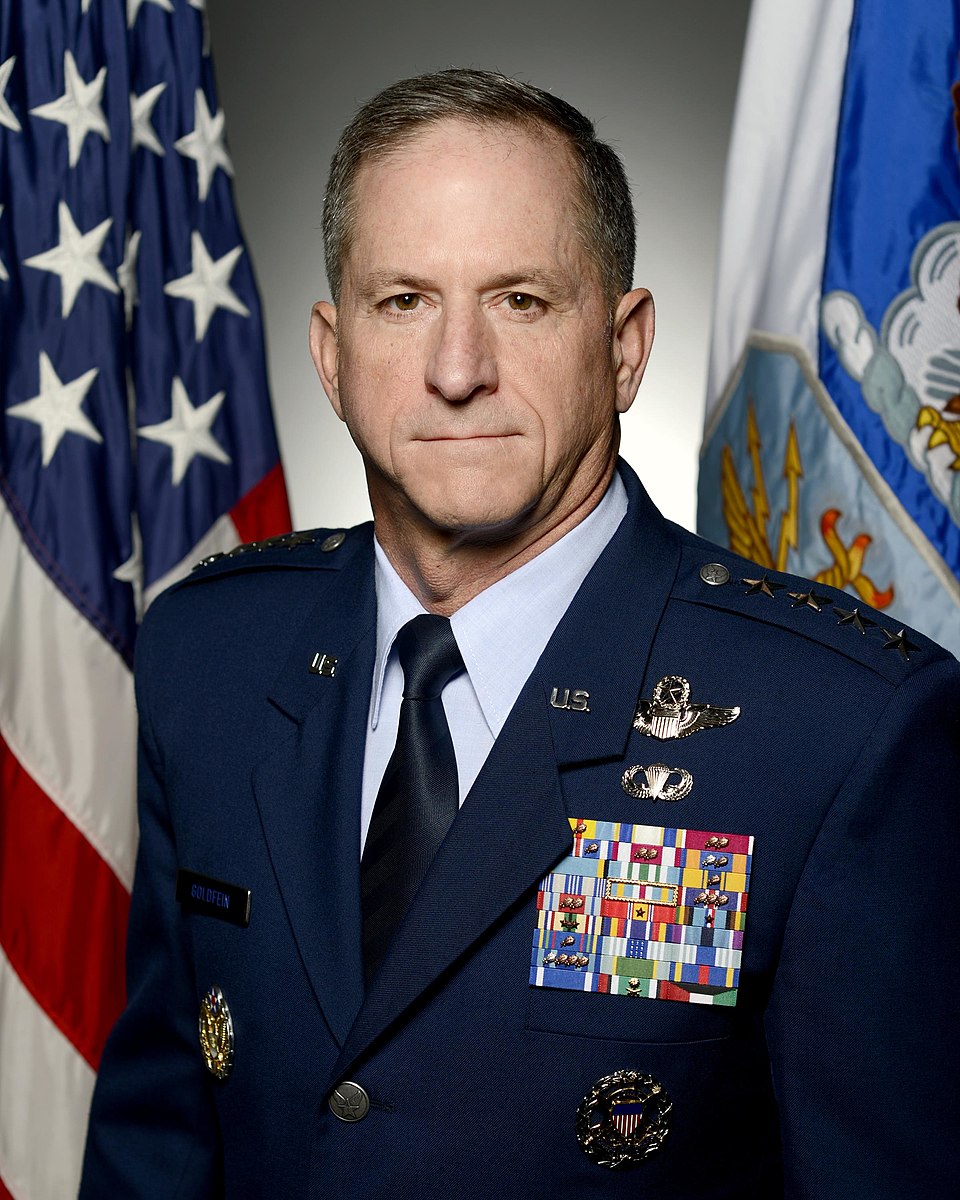
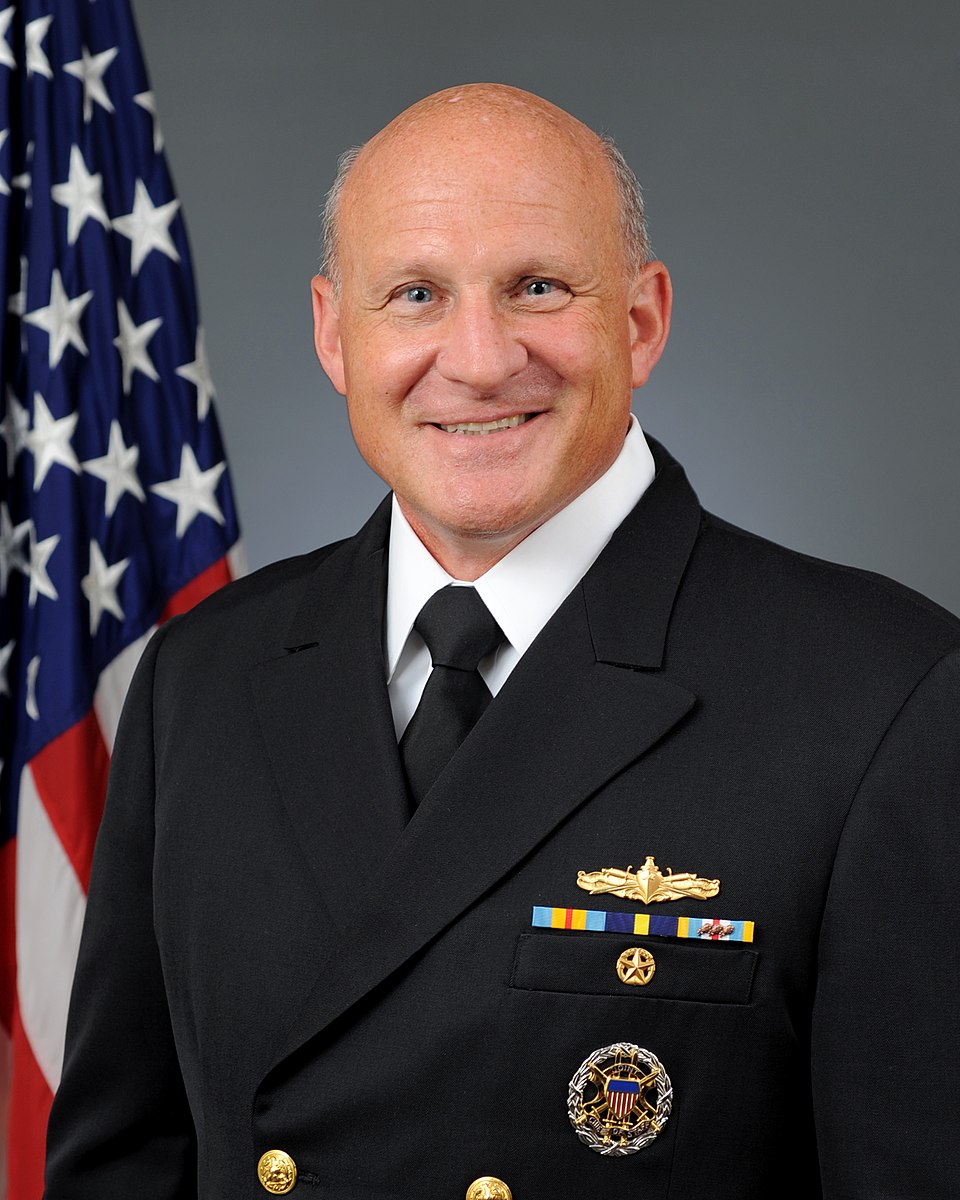
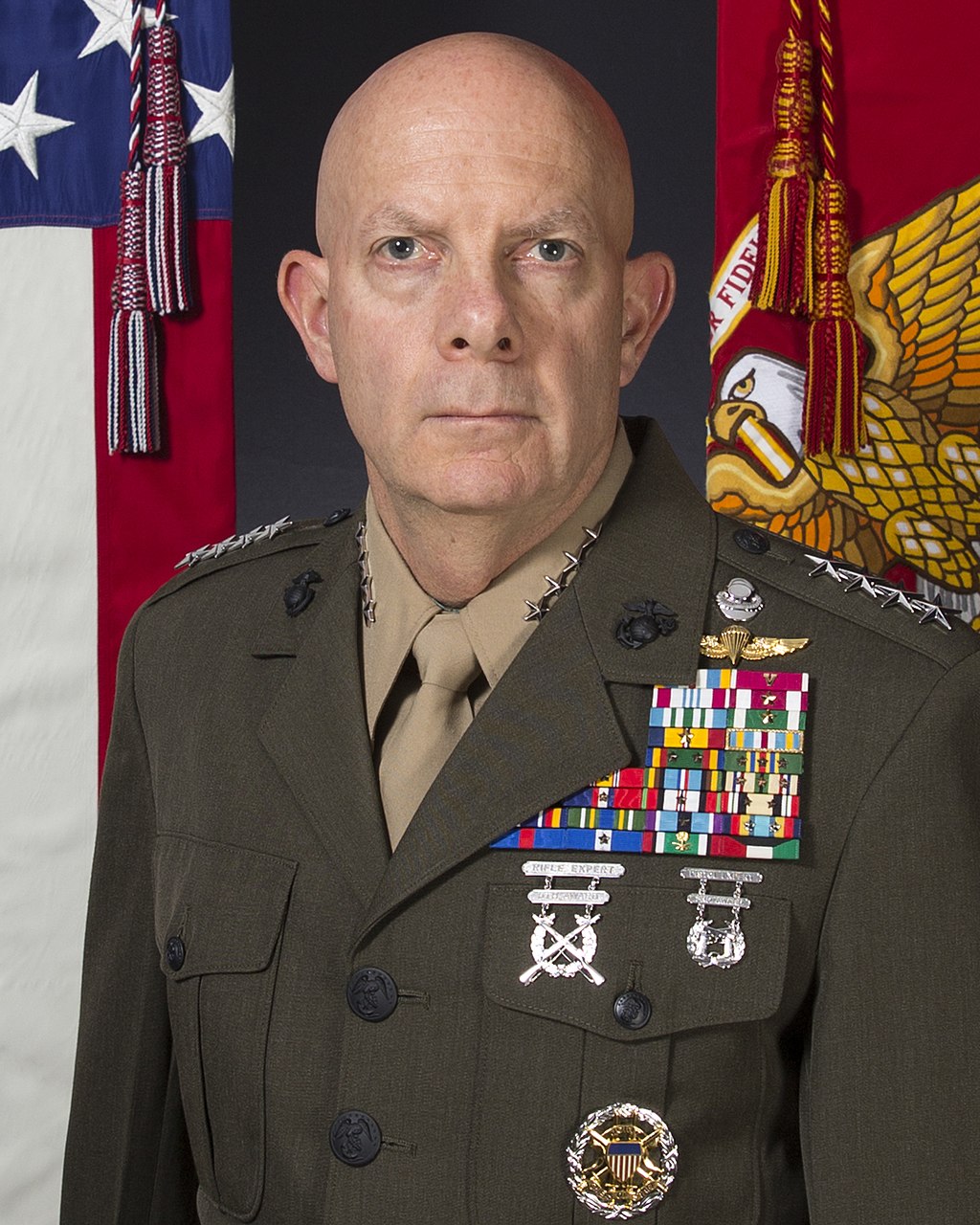
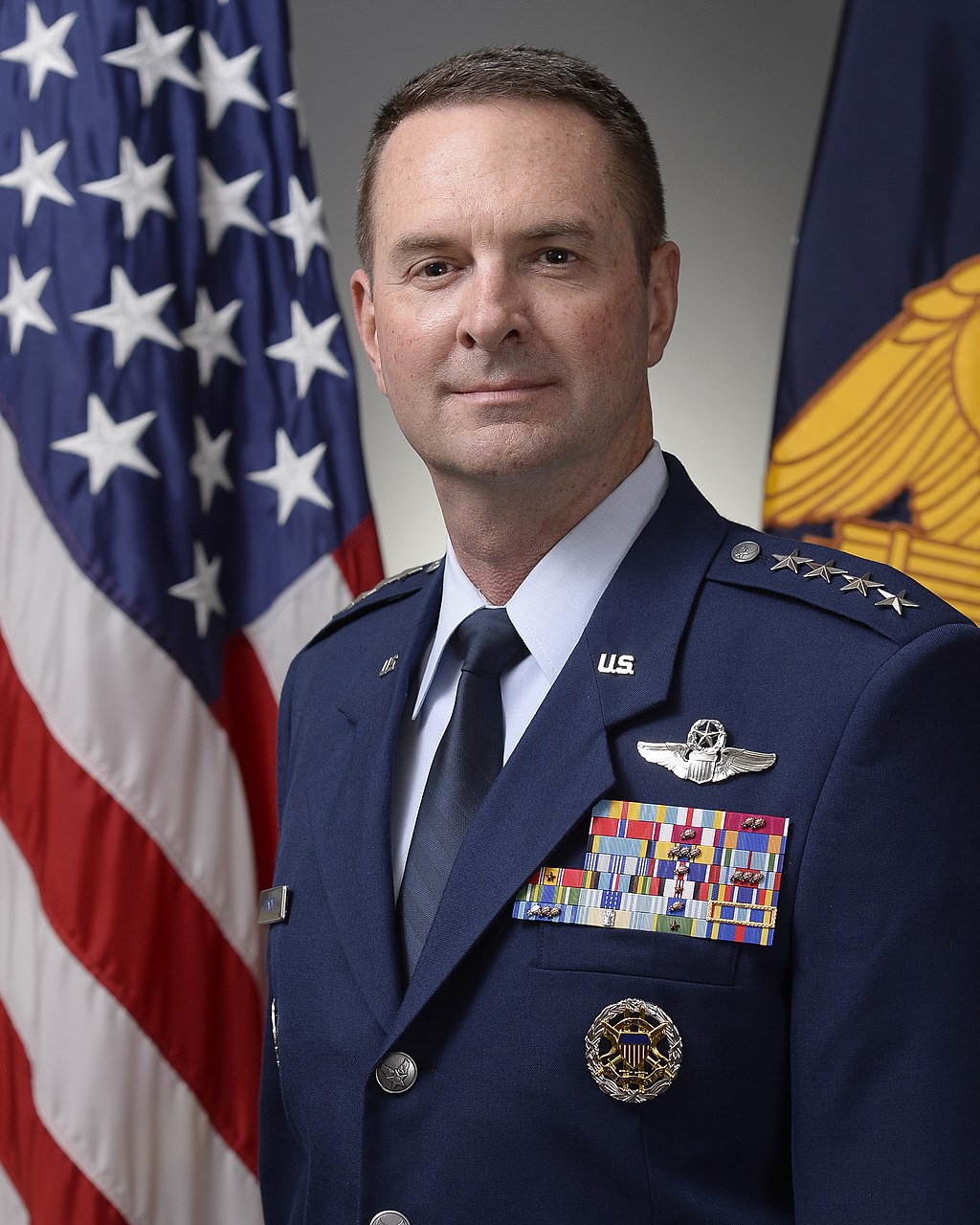
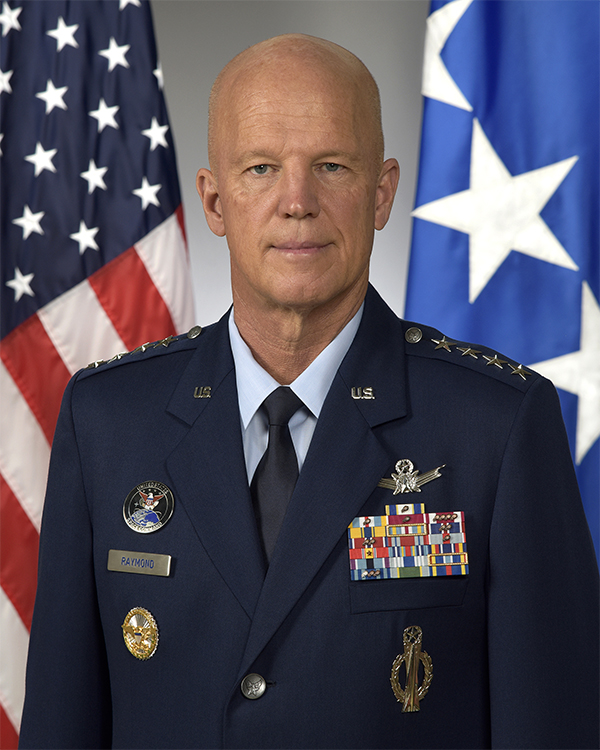
Notes:
- Space command falls within the Department of the Air Force. Doesn't have it's own separate Department.
- This is akin to how the Marne Corps falls within the Department of the Navy but is its own separate service.
- Air Force Secretary overseas both Air Force and Space Force
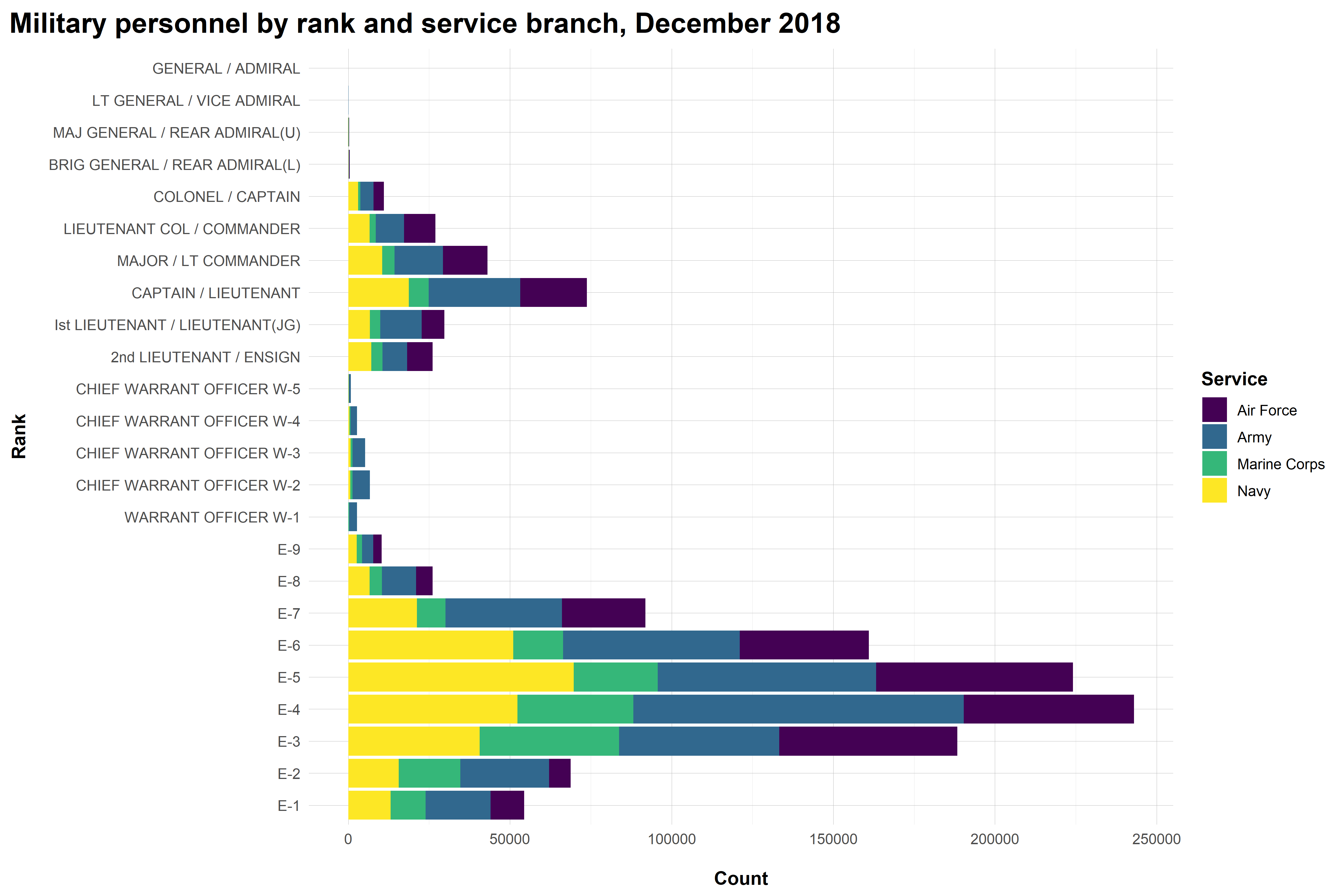
Notes
- General structure of US military in terms of distribution of rank
- Notice that there are way more enlisted personnel than officers
- Bi-modal distribution, officers kind of replicate their own mini-service.
Organization of the Military
Joint Chiefs of Staff
Equip, train, and organization of individual service branches
Serve as sernior uniformed advisers to the president, National Security Council, and Congress
Note: They're not in the operational chain of command
Chairman is the highest ranking uniformed military officer
Guide the development of new eapons systems, technology, and force structure
Set routine administrative policies
Notes
- JCS is mostly the adminisrative component
- Less directly concerned with war-fighting/planning
- This is not entirely true, since planning, recruitment, weapons systems, etc., all have a clear relationships to war-fighting capabilities.
Organization of the Military
Combatant Commands
Oversee US military forces from all branches operating in a particular area of responsibility (These can be geographic or functional)
Plan and execute military operations
Advise the president and members of Congress on military operations, battle plans, war efforts, etc.
Answer directly to the president and secretary of defense
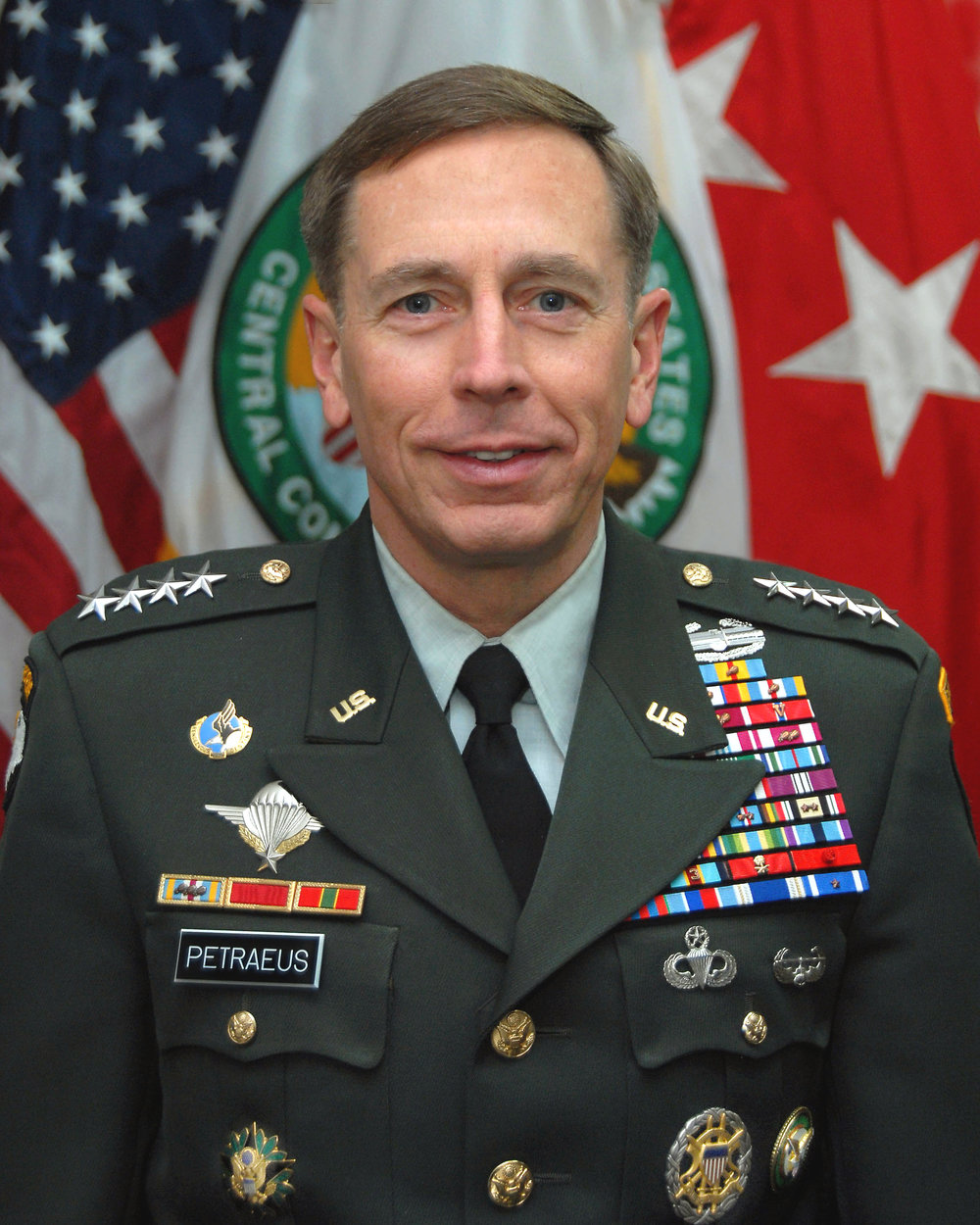
Notes
- Combatant commanders are more directly responsible for war-planning/fighting
- David Petraus is probably the most famous recent combatant commander
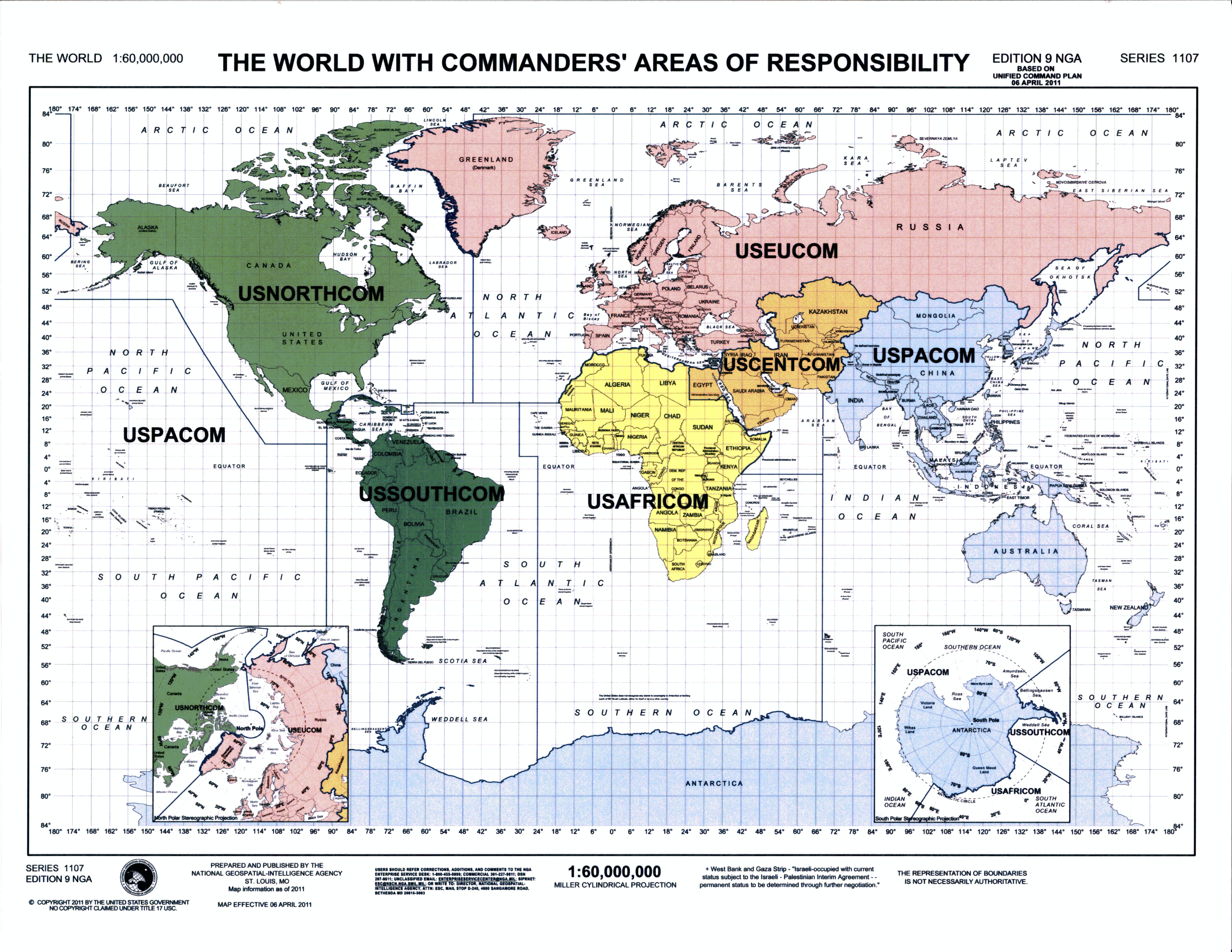
Notes
- Map shows rough overview of how combatant commands are divided up. Mostly focus on geographic areas of responsibility
- Also some functional commands, like Special Operations command, transportion command, etc.
The Military in Politics
The Military in Politics
Long tradition of the US military being "apolitical", but what does this mean?
The Military in Politics
Long tradition of the US military being "apolitical", but what does this mean?
- Civilian control of the military IS a political arrangement.
The Military in Politics
Long tradition of the US military being "apolitical", but what does this mean?
Civilian control of the military IS a political arrangement.
But there's a puzzle: How do we "reconcile a military strong enough to do anything the civilians ask with a military subordinate enough to do only what civilians authorize?" (Feaver 2003, 2)
The Military in Politics
Long tradition of the US military being "apolitical", but what does this mean?
Civilian control of the military IS a political arrangement.
But there's a puzzle: How do we "reconcile a military strong enough to do anything the civilians ask with a military subordinate enough to do only what civilians authorize?" (Feaver 2003, 2)
Civil-Military relations has a couple of key parts:
How the civilian population and the military relate to one another
Military actors intervening in civilian political processes
Civilians politicizing the military
Notes
- The military is inherently political
- How we manage it is inherently political
- Keeping it "a-poltical" is a fundamentally political question
The Military in Politics
| Party | Air Force | Army | Marine | Navy |
|---|---|---|---|---|
| Democrat | 1 | 6 | 1 | 0 |
| Republican | 3 | 4 | 1 | 4 |
## ## Pearson's Chi-squared test## ## data: chiefs$Party and chiefs$branch## X-squared = 4.7917, df = 3, p-value = 0.1877Notes
- Macroeconomic policy preferences of Republicans and Democrats have implications with respect to military policy
- Republicans tend to enact capital-friendly policies, Democrats labor-friendly policies
- In this case the military is affected by broader political preferences
- Democrats have preference for labor-intensive force structure
- Republicans have preference for capital-intensive force structure
- This relationship has weakened over time since Fordham initially looked at it.
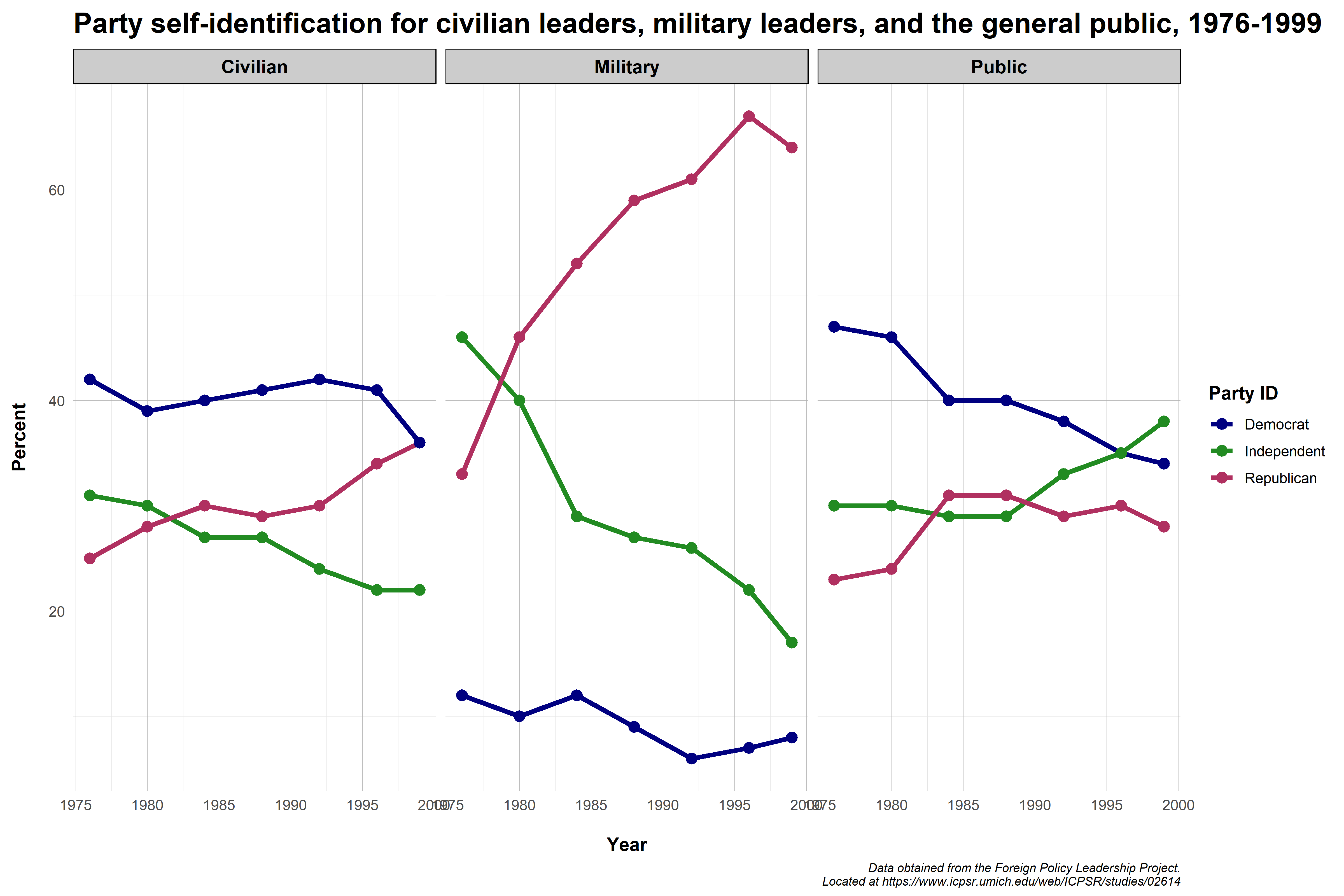
Note
- Military personnel also have their own political preferences
- Data is hard to come by, but earlier survey data allow us to compare military officers to other societal groups
- We see a huge increase in Republican self-identification.
- This mostly comes at the expense of independents
- Does this mean the military is getting more conservative?
- Not necessarily
- Democratic self-identification remains mostly stable, but with some decline
- Conservative/right political orientation may be stable across time. Party self-ID is simply matching underlying preferences
- But this may still be a concern if military officials are more openly identifying with one party over another. Risks professionalization of the military.
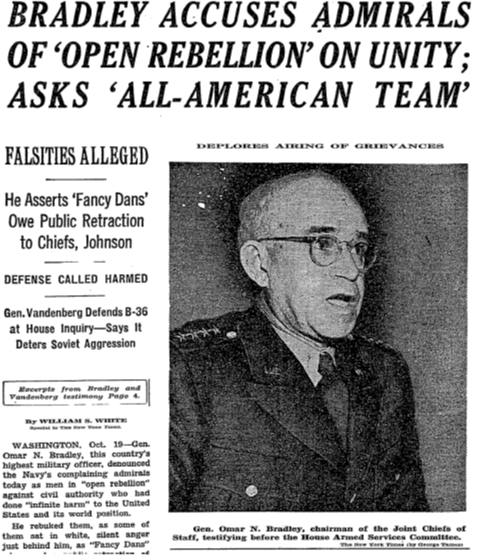
Notes
Sometimes political conflict spills out into the open
- Revolt of the Admirals was a case in the late 1940s rooted in interservice rivalries and unification of military under DoD
- Navy was concerned that the rise of the Air Force and the emphasis on strategic bombing and nuclear weapons would leave it vulnerable to cuts or elimination.
- President Truman sought to hold the FY1950 defense budget to \$15 billion, but individual services combined calculated they needed \$29 billion.
- Navy were planning a supercarrier capable of launching larger bombers that could be used to deliver nuclear weapons, but these bombers didn't exist yet.
- Secretary of Defense Louis Johnson ordered the supercarrier program to be halted on April 23, 1949.
- Secretary of the Navy John Sullivan wasn't consulted and resigned in protest
House Armed Services Committee hearings investigating allegations of corruption began in the summer of 1949
- Navy leadership (active duty and retired) began attacking the civilian leadership of the DoD, the Army, and the Air Force. Specifically calling out the Air Force and the entire plan for relying on B-36 bombers and atomic weapons. Also claimed the Navy was being intentionalyl sabotaged and destroyed.
- Eventually General Omar Bradley testified that Navy leaders were:
“fancy Dans who won’t hit the line” unless they could call the signals. “I believe that the public hearing of the grievances of a few officers who will not accept the decisions of the authorities established by law. . . have done infinite harm to our national defense, our position of leadership in world affairs, the position of our national policy, and the confidence of the people in their government.”
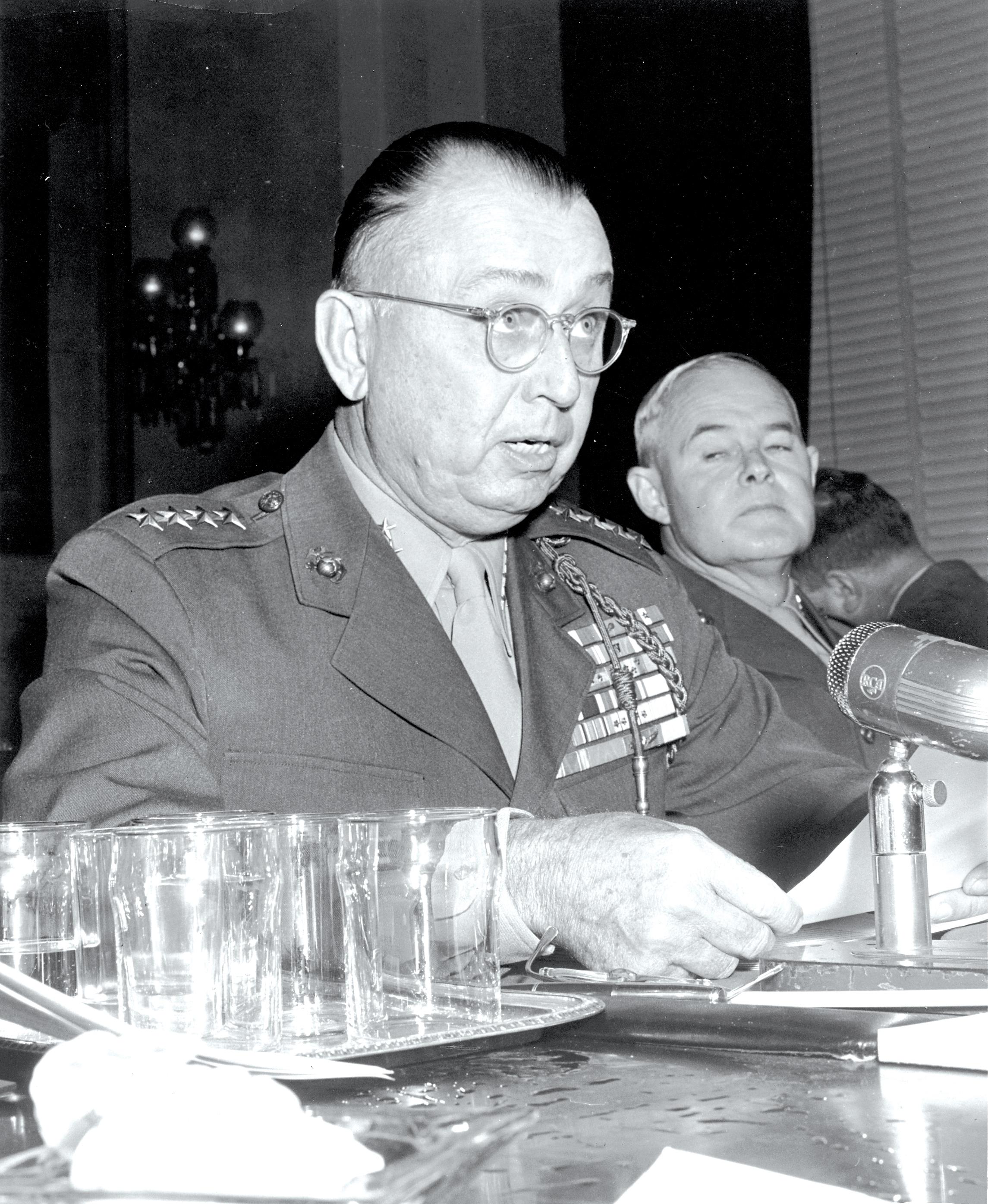
Notes
- Marine Corps was initially vulnerable to cuts as the unification process unfolded
- Marine Commandant Clifton Cates was not invited to a conference in Key West in 1948 that dealt with the restructuring among the services.
- Cates testified before the House Armed Services Committee that budgetary priorities and other services were destroying the Marine Corps.
- Backed up the Navy, but also sought to represent the Marines as a standalone service, advocating that the Marines be represented formally on the JCS (this doesn't happen until the 1970s)
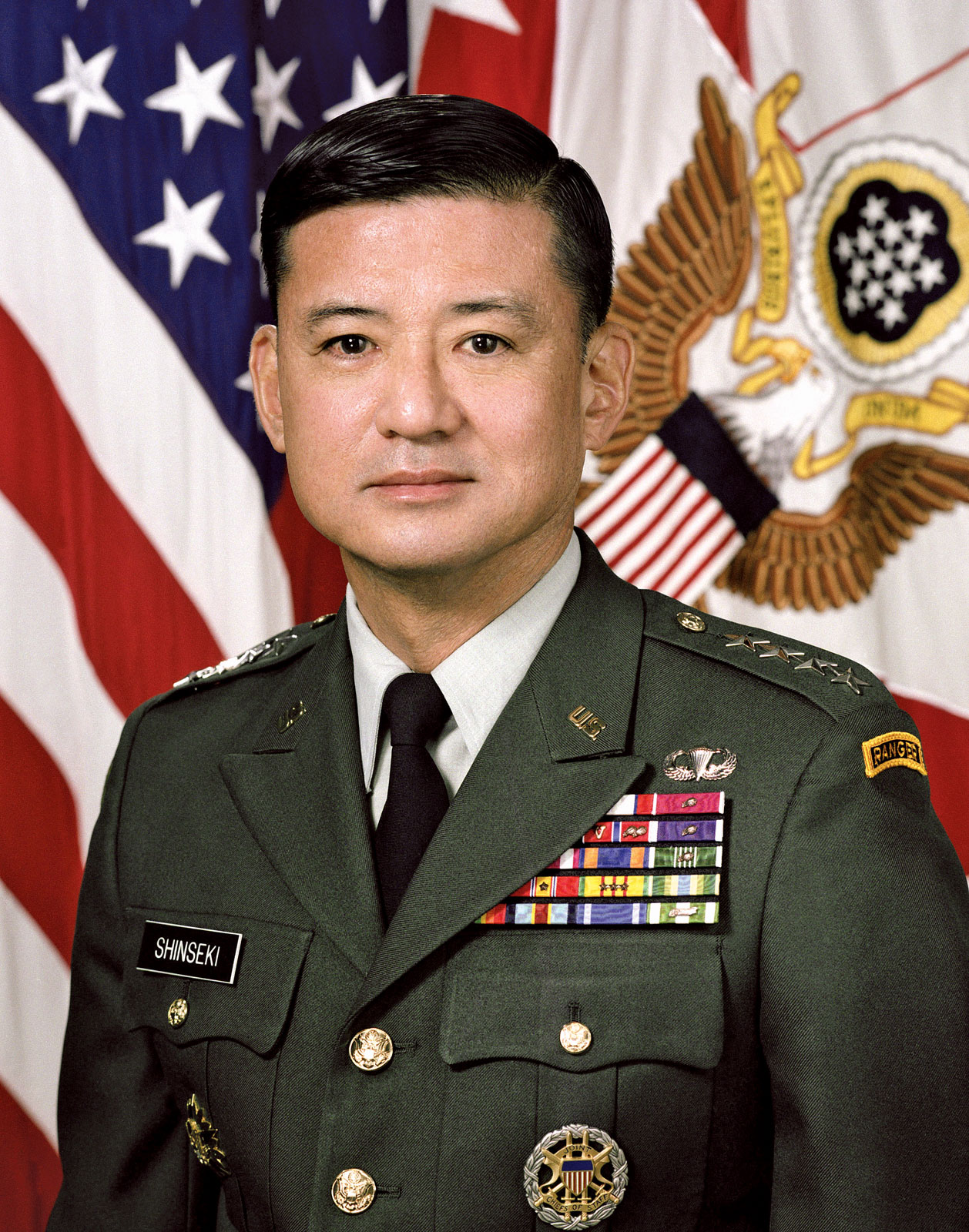
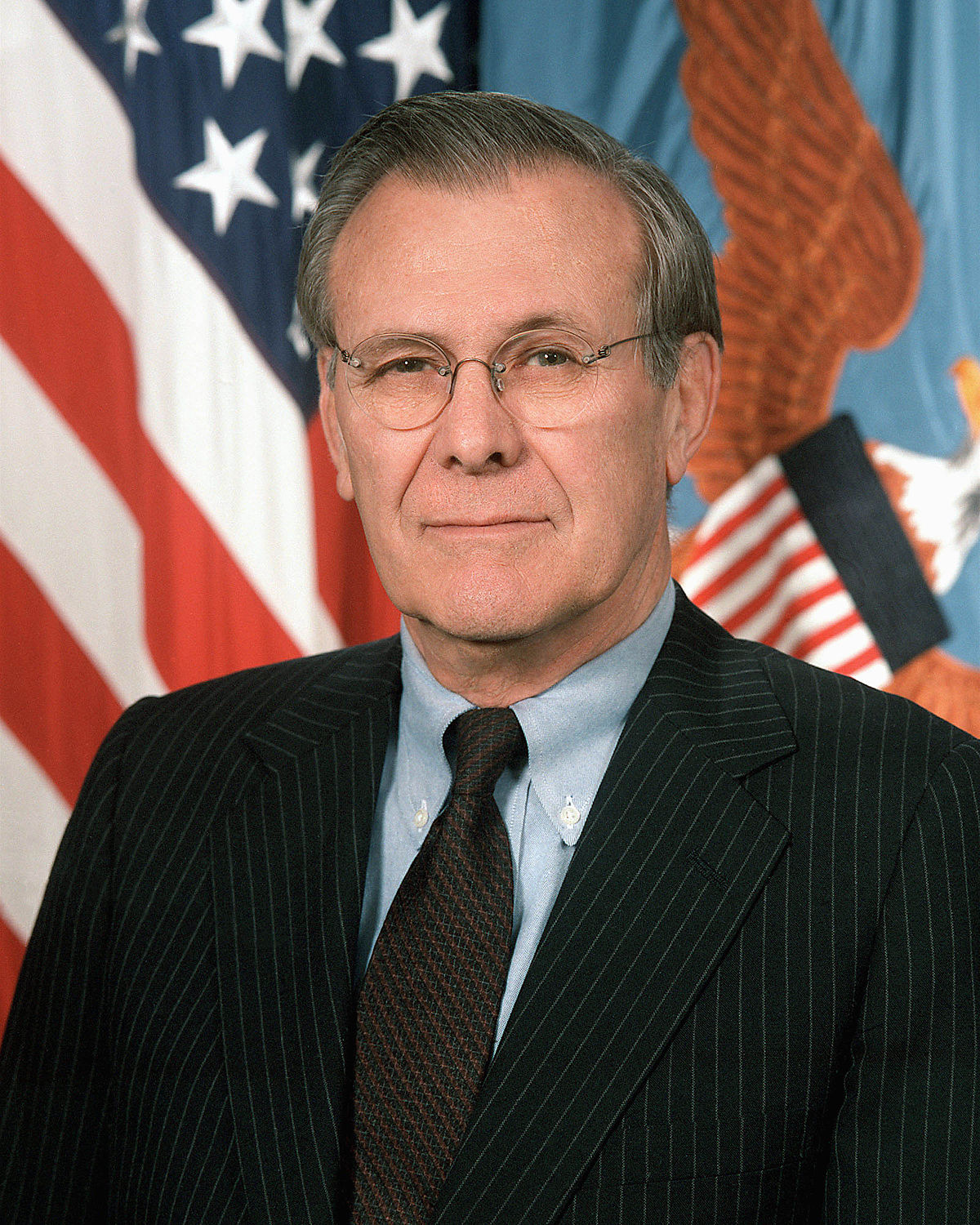
Military leaders trying to avoid becoming politicized
- Military leaders often try to avoid becoming embroiled in politcal conflicts. But this can be tough when the president and congress both press military leaders for information that may conflict with executive policy.
- In the lead up to to the Iraq War there was substantial conflict over manpower requirements
- Rumsfeld, Vice President Cheney, and others insissted that US forces would be greeted as liberators and the post-war stabilization operations would be easy.
- This obviously turned out to not be the case.
- In hearings before the invasion in 2003, General Shinseki (then Army chief of staff) was being grilled by Senator Carl Levin on manpower requirements. Shinseki was loathe to publicly contradict his boss, but eventually relented and said "several hundred thousand" troops would be needed.
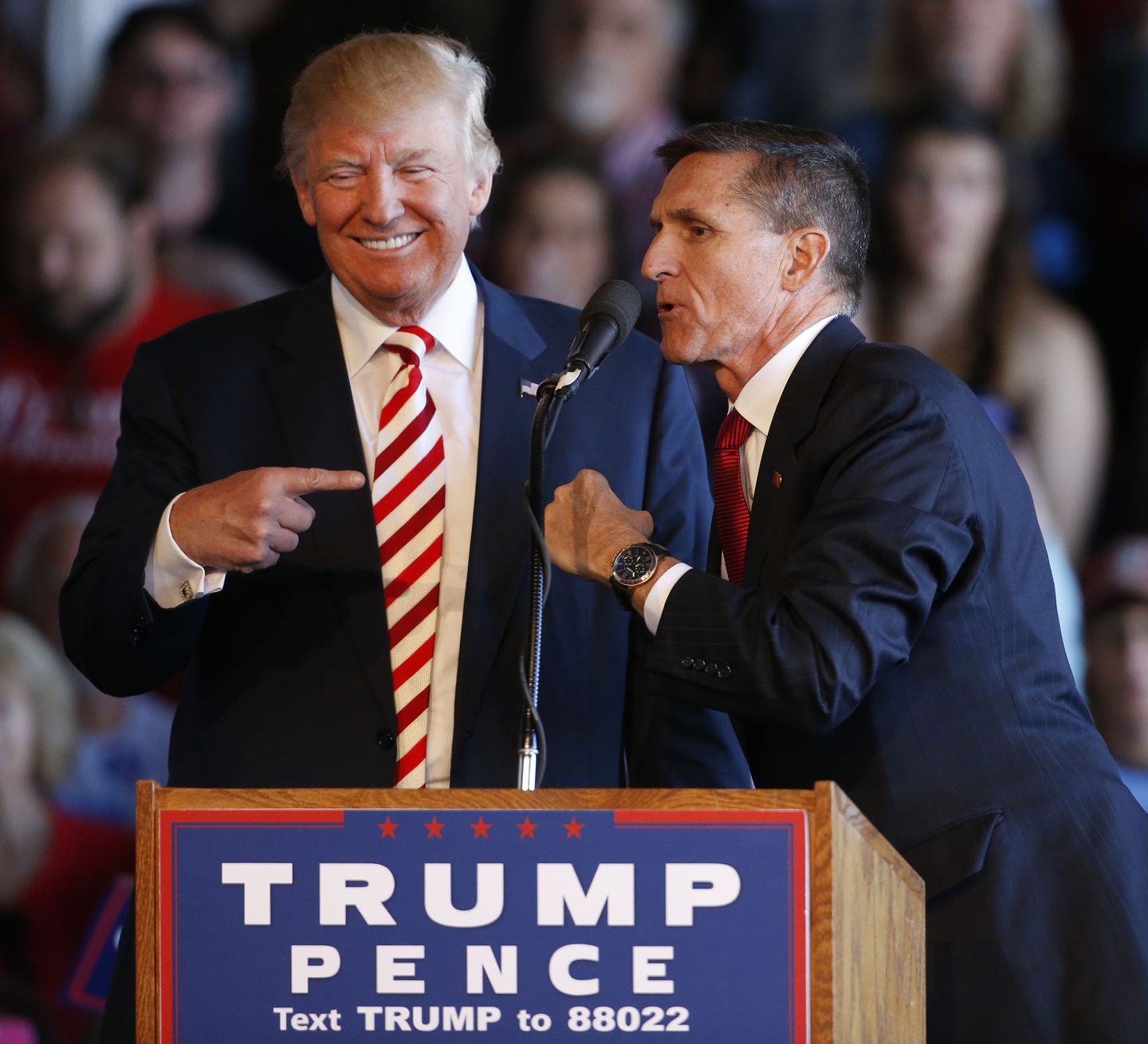

Politicization of military leaders
- Military personnel, both active duty and retired, have become important symbols of political legitimacy.
- Retired general/flag officers provide sought-after endorsements by political leaders of both parties
- This presents problems in that it creates or reinforces the perception that civilian leaders are only legimitized by the approval of military officials (obviously this is difficult since both sides typically attract military endorsements).
- It also shifts the focus of foreign policy to the military, when the military doesn't know much about most areas of foreign policymaking. We rely much more on civilian officials and expertise, and yet they don't carry the weight of uniformed personnel.
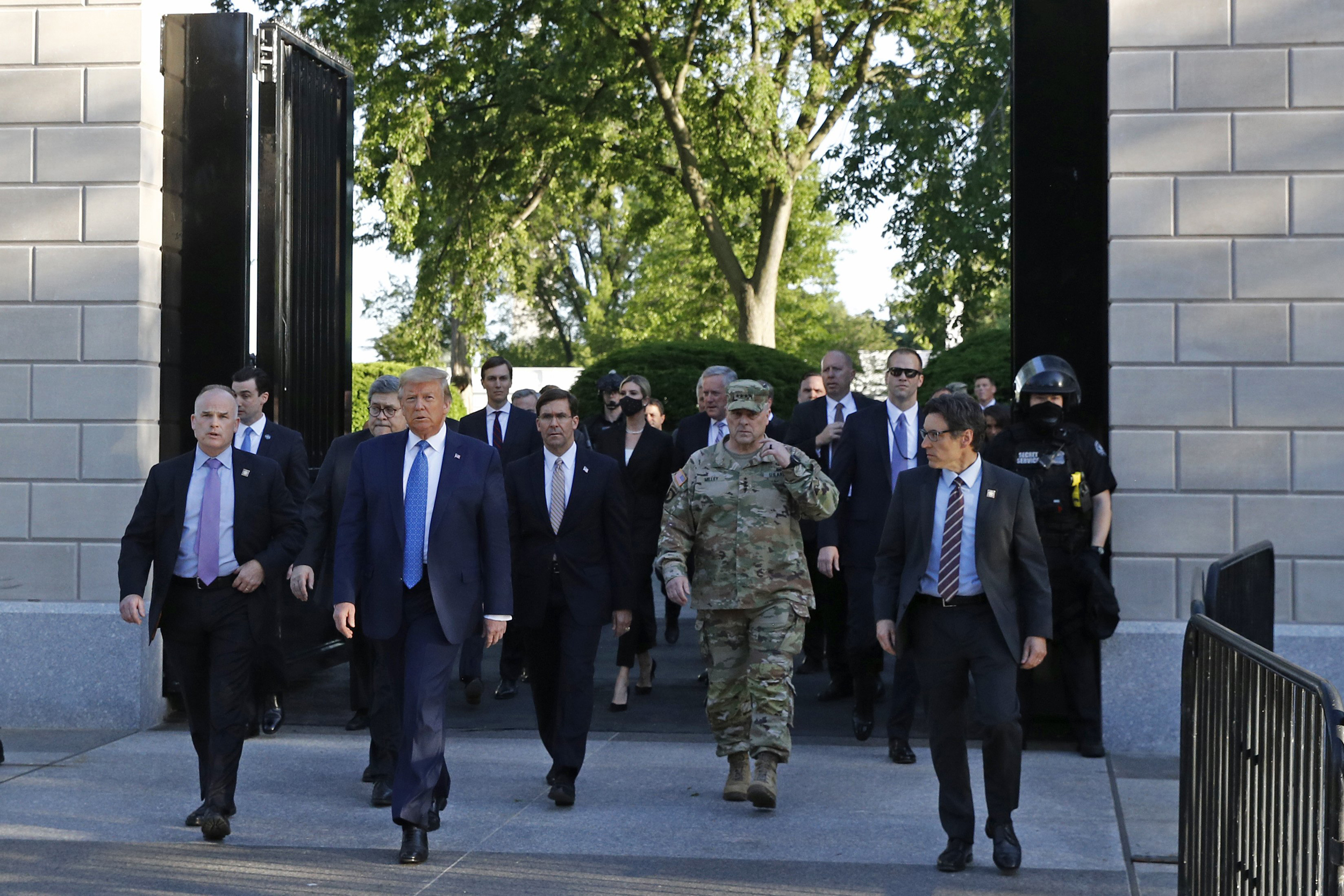
The use of military personnel for political purposes.
- Politicians often want to be seen in a military context to signal seriousness, expertise, authority, command, etc.
- Over the summer of 2020 President Donald Trump's Attorney General ordered military forces to attack peaceful protesters gathered in opposition to police brutality in Lafayette Square in Washington, DC.
- The goal was to create a photo op of the president appearing with military officers walking to St. John's Church, at which point he held up a bible.
- This is messaging and signaling for core constituents. It didn't really do anything other than inflame tensions and protests in DC.
- But military leaders later became accutely sensitive to the perception that the military was involved in ordering the dispersion of protestors and that they were actively involved in the effort to attack peacefully protesting individuals.
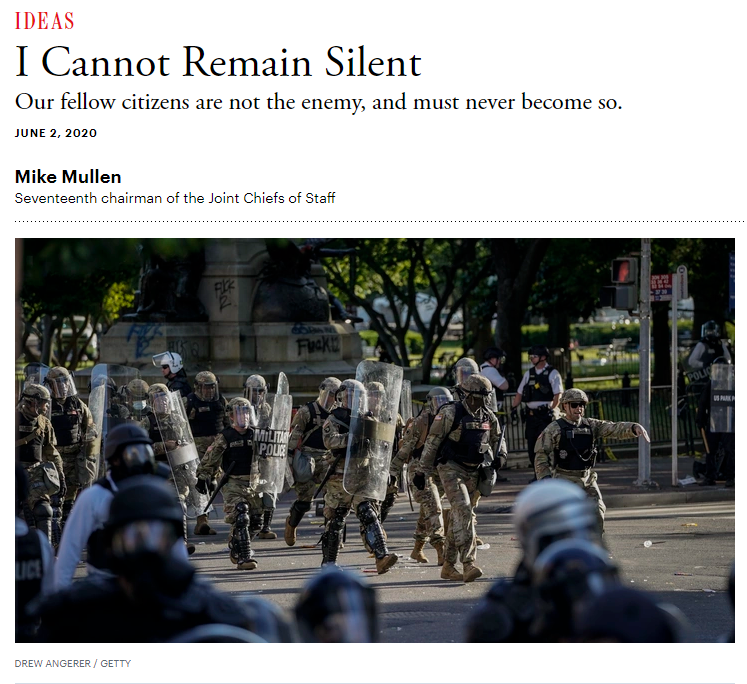
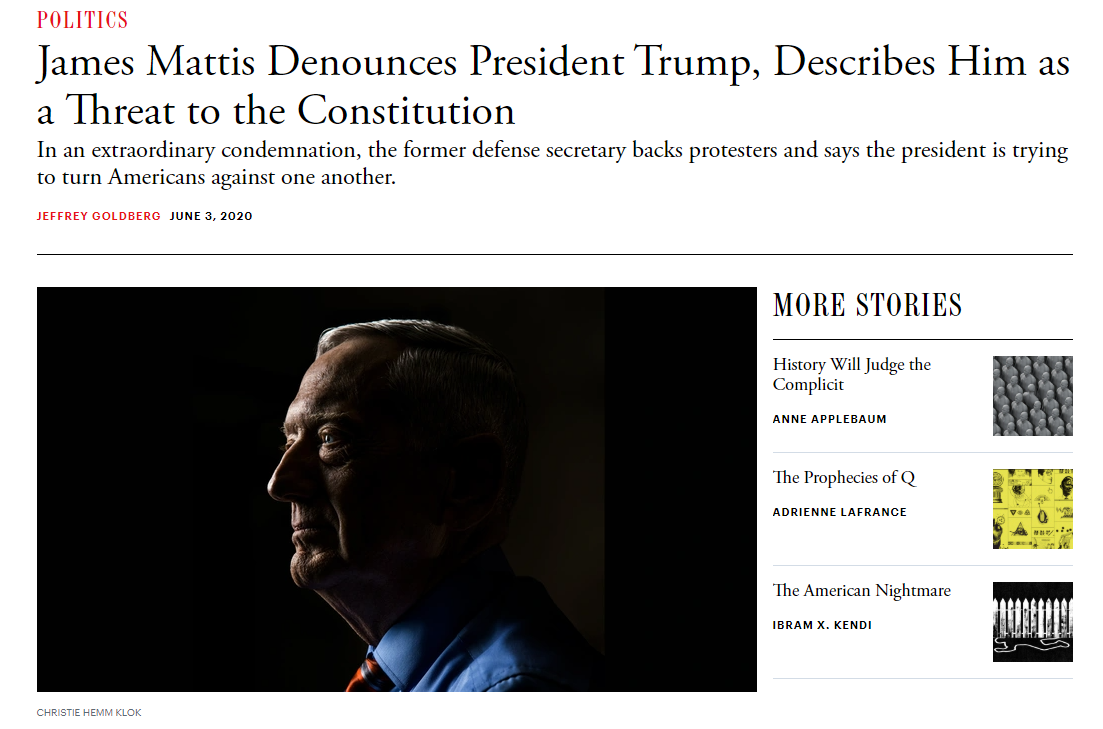
Backlash
- This event sparked a massive outcry of support for protesters from across the political spectrum, and a wave of condemnations of Milley, Esper, Barr, and Trump.
- Among the most prominent, two former Chairs of the Joint Chiefs of Staff published articles explicitly condemning Trump.
- Most notably, former Defense Secretary James Mattis finally broke his silence after leaving office.
- In the age of Trump this might not seem like a big deal, but for these two to speak out against a sitting president is particularly unusual.